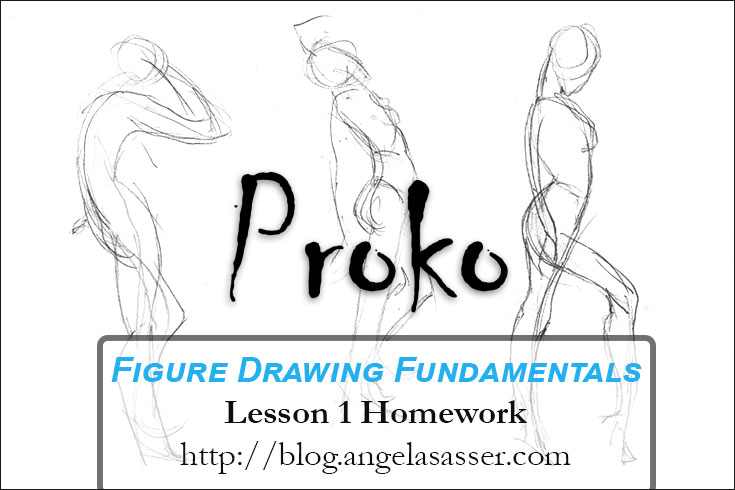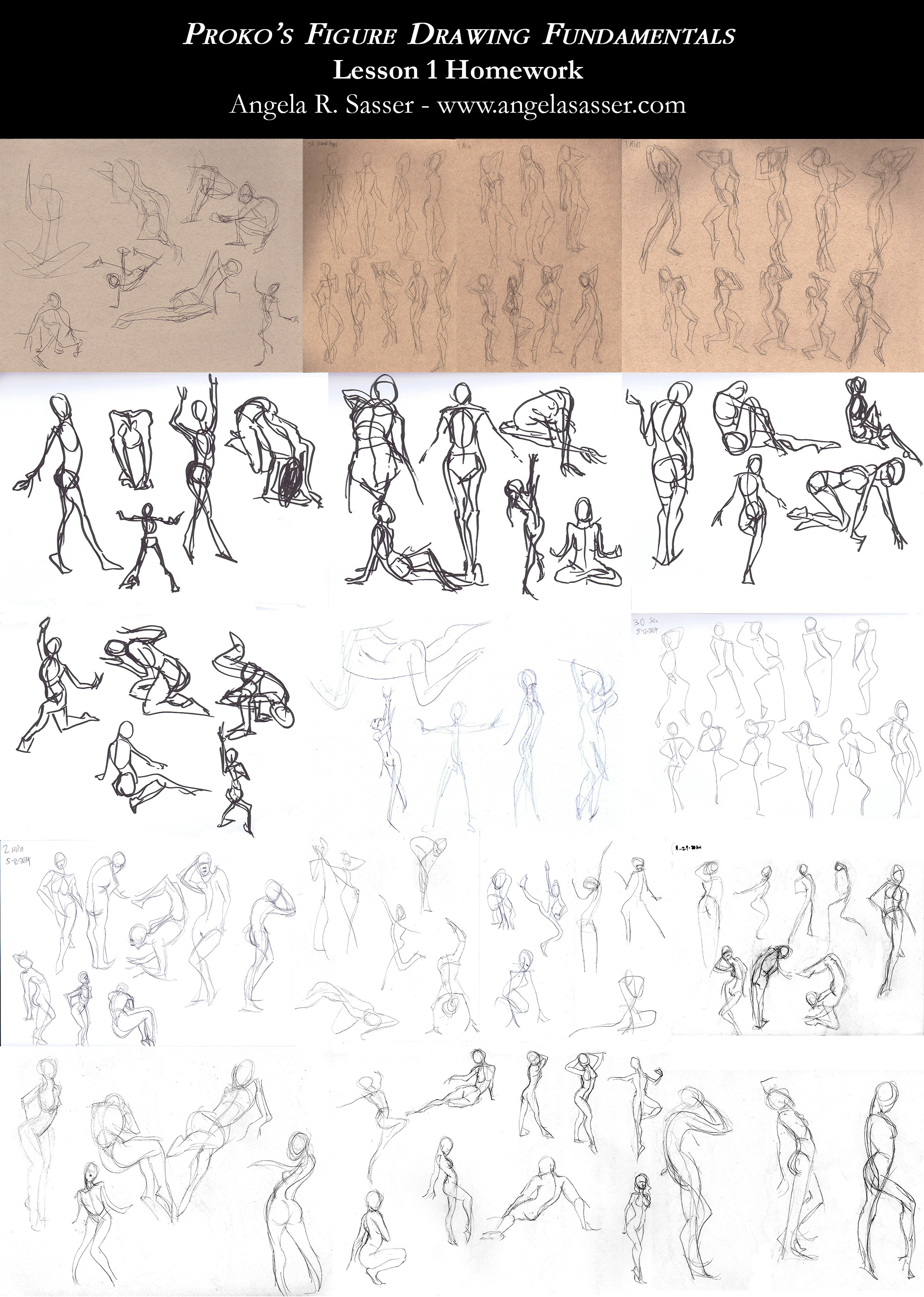
I’m taking a small break from my book club posts for Artist As Brand to share something different instead, as the next part of the AAB blog series involves some intense homework that’s taking me longer than usual. In the meantime, enjoy a look at the gesture sketches I’ve been doing for Stan Prokopenko’s Figure Drawing Fundamentals course over the past few months! (If you missed my first impression post about this course, read on here to get an overview of what the class is about!)
The first lesson covers the topic of gesture drawing, a topic which most artists usually dismiss as quick, simple practice drawings. I’ve realized even after taking several life drawing classes in college that my art was missing something. I’m fairly well practiced drawing the human figure, but the people in my paintings were lacking something. The muscles were all generally in the correct place, but my figures were stiff and lacking expressiveness. Having observed the first lesson in Proko’s curriculum, I’m certain now that the stiffness of my figures is mainly a result of not understanding the importance of gesture.
As Proko suggested, I did 100+ sketches until I felt like I understood the difference between copying what I see and capturing the energy and flow of a pose (aka. the gesture). This montage collects most of the sketches I did starting with the oldest ones at the top and the newest ones at the bottom. Be sure to check out slot games uk to have great time with the new high quality slot games.

What I’ve Learned
Copying a pose is not gesture. I realize that in my previous life drawing lessons, I thought that I was supposed to copy the volume of a pose and nothing more. Having a timer while drawing also had the opposite effect it was meant to have. It was meant to force me to simplify, but mostly I just reacted to a timer by rushing through. I became more concerned with replicating what I saw when I should have been focusing on the expressive line of the form, the flow of the pose, and the potential for exaggeration. This meant that my result was an approximation of my model, which may or may not result in a good sense of flow in my drawn pose. Being aware of gesture will also help me when utilizing reference photos for my pieces. Copying directly from what I’ve seen in photos can also result in a stiff, soulless pose. Being more familiar with gesture means I can know where to push and pull the pose from a reference photo.
Contour is not gesture. I can tell from my early poses in this montage I was very concerned with the container shape and contour details of the body. Gesture should focus on the flow and expressive potential of the figure, even if it doesn’t follow the laws of physics at all times. Adding the proper details later on is what will tie all the parts together. I think of comic book art as a perfect example of this principle of gesture at work. Figures are usually pushed past what is photorealistic gesture because that brings a sense of emotion and excitement to the characters.
Scribbled gestures are not helpful. Proko actually posted a very helpful video about why sloppy lines are a bad habit. I am definitely guilty of this! I notice by the end of this montage, my lines became cleaner. When I allowed myself to be sloppy previously, I was attempting to ‘feel out’ the gesture by making lots of lines till I discovered the right one. This made me lazy and less observant of the form and pose I was trying to replicate. By simplifying my mark-making, I force myself to actually really look and learn from what I see, rather than diving in and rushing to finish.
I already feel like this first lesson has helped me tremendously when drawing characters and pushing the dynamism in my poses. Even still, there’s a lot to learn, considering I’m only at the beginning! I also understand that I’m never going to stop learning when it comes to this skill, which is at the heart of drawing good anatomy, but also in composing interesting compositions.
Stay tuned because I plan to keep track of my progress in this class in later entries!


